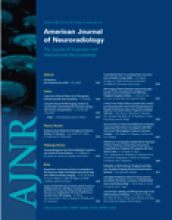Abstract
SUMMARY: Within the past 2 decades, the number of CT examinations performed has increased almost 10-fold. This is in large part due to advances in multidetector-row CT technology, which now allows faster image acquisition and improved isotropic imaging. The increased use, along with multidetector technique, has led to a significantly increased radiation dose to the patient from CT studies. This places increased responsibility on the radiologist to ensure that CT examinations are indicated and that the “as low as reasonably achievable” concept is adhered to. Neuroradiologists are familiar with factors that affect patient dose such as pitch, milliamperes, kilovolt peak (kVp), collimation, but with increasing attention being given to dose reduction, they are looking for additional ways to further reduce the radiation associated with their CT protocols. In response to increasing concern, CT manufacturers have developed dose-reduction tools, such as dose modulation, in which the tube current is adjusted along with the CT acquisition, according to patient's attenuation. This review will describe the available techniques for reducing dose associated with neuroradiologic CT imaging protocols.
- Copyright © American Society of Neuroradiology












